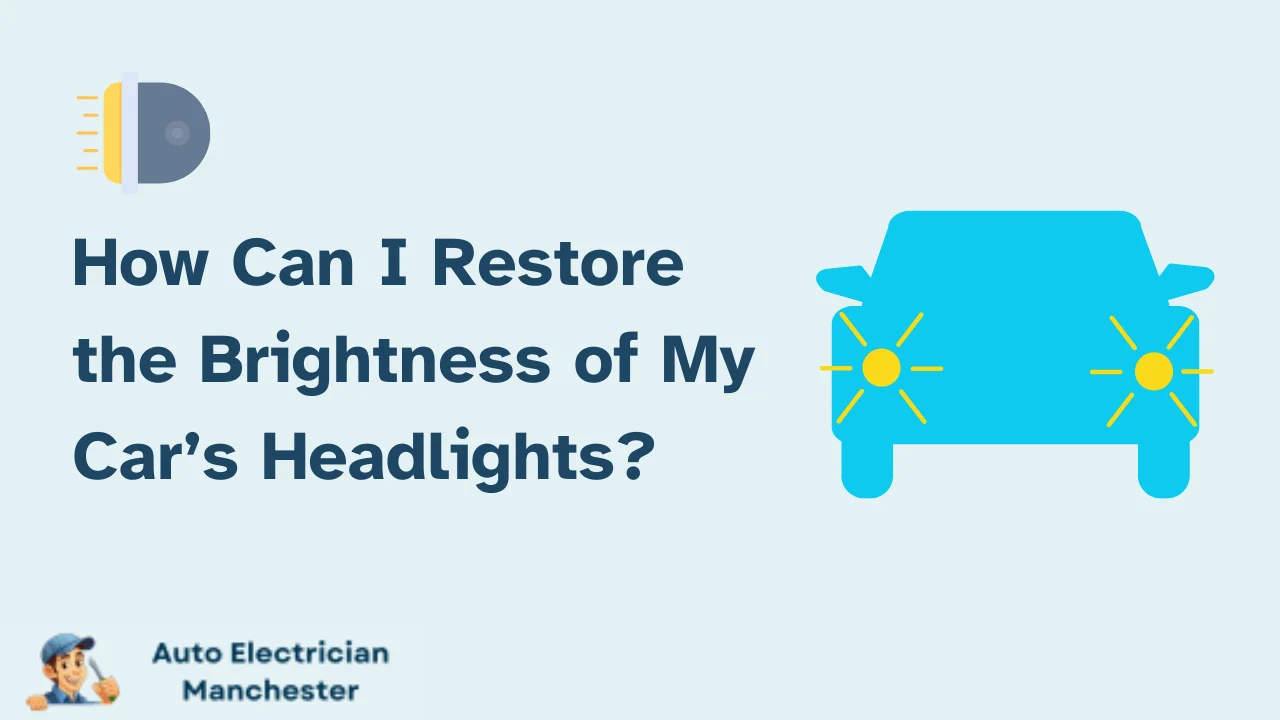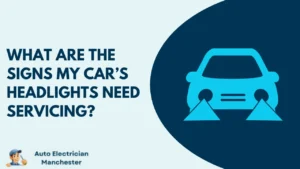
Dim headlights pose a double threat: they create a safety hazard for you and other drivers on the road, and they can lead to failing a vehicle inspection. Thankfully, in most cases, you can restore your headlights’ brilliance without the hassle and expense of replacements. This article will guide you through the process of bringing back your headlights’ shine, ensuring clear visibility and confident nighttime driving.
Understanding the Cloud
The culprit behind the cloudy, hazy appearance of your headlights is usually a process called oxidation. Over time, exposure to sunlight breaks down the plastic lens material, creating a microscopic layer that scatters light and reduces its overall brightness.
Restoration Path to Clarity
The solution to restoring your headlight’s brightness involves sanding and polishing the lens to remove this oxidized layer. There are two main methods you can choose from, depending on your budget and comfort level:
DIY Headlight Restoration Kit: This is a cost-effective option that provides everything you need for the job. The kit typically includes various grits of sandpaper, a polishing compound, and sometimes even applicators or buffing pads. The process involves meticulously sanding the headlight with progressively finer sandpaper grits, followed by buffing out the remaining haze with the polishing compound.
Power Drill with Buffing Pad: If you’re looking for a faster approach, using a power drill with a buffing pad can significantly reduce the time it takes to restore your headlights. However, this method requires more caution, as excessive pressure or heat can damage the headlight lens. Ensure you use a buffing pad specifically designed for headlights and a plastic polish formulated to remove oxidation without harming the lens material.
Essential Tips for Success
To achieve optimal results and avoid any mishaps during the restoration process, here are some crucial tips to keep in mind:
Protect Your Paintwork: Before you begin sanding, meticulously mask the area around the headlights with masking tape. This will safeguard your car’s paint from accidental scratches or abrasions that might occur during the sanding process.
Water is Your Friend: Water plays a vital role in preventing the headlight lens from overheating and developing scratches during sanding. Use a spray bottle with clean water to keep the lens constantly damp while sanding with each grit.
Seek the Shade: Direct sunlight can cause the polishing compound to dry out prematurely, making the buffing process less effective. Find a shaded area, preferably a garage or carport, to work on your headlights.
UV Protection for Lasting Clarity: Once you’ve successfully restored your headlights’ clarity, apply a high-quality UV protectant to the lens. This creates a protective barrier that helps shield the plastic from further sun damage and delays the oxidation process, extending the lifespan of your restoration efforts.
Choosing the Right Headlight Restoration Kit
When selecting a headlight restoration kit, consider these factors to ensure you have the right tools for the job:
Grit Selection: Look for a kit that includes a variety of sandpaper grits, typically ranging from 1000-grit to 3000-grit or higher. The lower grit sandpaper (e.g., 1000-grit) removes heavier oxidation, while the higher grits (e.g., 3000-grit and above) progressively smooth and polish the lens for a clear finish.
Polishing Compound Quality: A high-quality polishing compound will effectively remove remaining haze and oxidation after sanding, leaving a clear and shiny lens. Opt for a compound specifically formulated for headlights, as these are designed to work safely and effectively on plastic lenses.
Additional Extras: Some kits may include extras such as applicators or buffing pads for applying the polishing compound. Consider these as a bonus, but they can be easily substituted with microfiber cloths for applying the compound during the buffing process.
Power Drill Method: Pros and Cons
Pros:
Faster Completion: Using a power drill with a buffing pad significantly reduces the time and effort required to restore your headlights compared to manual sanding.
Even Buffing: A power drill ensures a consistent and even buffing motion, minimizing the risk of creating swirl marks or unevenness on the lens surface.
Cons:
Risk of Heat Damage: Excessive pressure or friction during buffing with a power drill can generate heat, potentially leading to warping or melting of the headlight lens. It’s crucial to maintain a light touch and use a polishing compound designed for plastic lenses to minimize heat build-up.
Skill Required: Operating a power drill effectively requires a moderate level of skill and control to avoid damaging the headlight lens. If you’re unfamiliar with using power tools, the manual sanding method might be a safer option.
Can Headlight Restoration Be Permanent?
While headlight restoration effectively removes oxidation and restores clarity, it’s not a permanent solution. Over time, the headlights will be exposed to sunlight again, and the oxidation process can gradually recur. However, applying a high-quality UV protectant after restoration helps significantly slow down this process and extend the lifespan of the restored clarity. Reapplying UV protectant periodically, every 6 months to a year, will further enhance the longevity of your restoration efforts.
Conclusion
Restoring your headlights’ clarity is a relatively simple and cost-effective way to improve nighttime visibility and ensure safer driving. By following the methods outlined in this article and considering the valuable tips provided, you can successfully restore your headlights’ brilliance and enjoy clear vision on the road. Remember, proper headlight maintenance is essential for safety, so don’t hesitate to tackle a DIY restoration project or seek professional help if needed.
FAQ
Can toothpaste be used to restore headlights?
Toothpaste can mildly polish the headlight lens, but it’s not a long-term solution. Toothpaste lacks the abrasiveness needed to remove severe oxidation and may leave the lens with unwanted scratches. For a more effective and long-lasting restoration, a headlight restoration kit or professional service is recommended.

David Mack is a seasoned writer with a passion for the auto electrician niche. With years of hands-on experience and a knack for demystifying complex topics, David brings practical insights to his readers. Whether you’re a professional or a car enthusiast, his engaging articles offer valuable tips and trends in auto electrical systems.
